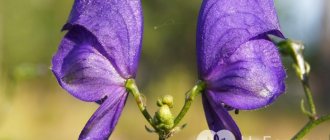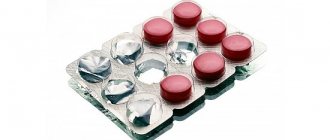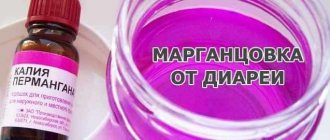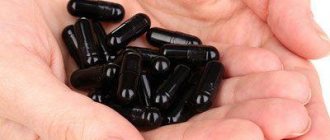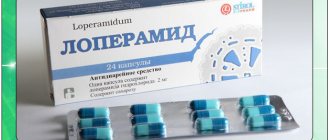Diarrhea is a consequence of digestive problems or intestinal infections . Many medications have been developed to combat it. For those who do not want to resort to chemicals, products based on natural ingredients are more suitable. The most effective of them is the recipe for pomegranate peels for diarrhea. The main thing is to know the rules for preparing such a decoction.
Why pomegranate peels help with diarrhea
The pomegranate peel takes up about 25% of the weight of the entire fruit. For some varieties this figure can reach up to 50%. It has a unique composition. It contains trace elements, polyphenols, catechins, bioflavonoids, vitamins and tannins . Thanks to this, it has the following properties:
- Promotes the death of pathogenic bacteria. At the same time, there is no negative impact on the functioning of the gastrointestinal tract.
- Accelerates the healing process of ulcers in the intestines.
- Stops the inflammatory process in the large intestine.
- Has a mild antiparasitic effect.
The vitamins and microelements included in the composition increase the body’s protective functions and have a tonic and antioxidant effect .
It is also useful to drink pomegranate juice for diarrhea. It has a beneficial effect on the blood, improves the functioning of the digestive system, and stimulates the immune system. People who introduce pomegranate into their diet get sick less often and are always in a good mood.
Contraindications
In some cases, a diarrhea remedy made from pomegranate peels can lead to negative health consequences. Among the main contraindications are:
- Allergic reaction to pomegranate.
- Kidney diseases in the acute phase.
- Liver diseases, especially hepatitis.
- Hemorrhoids or anal fissures.
- Presence of internal bleeding.
- When taking antihistamines.
- In cases where diarrhea is caused by serious diseases of the digestive system.
In addition to useful substances, pomegranate peel also contains alkaloids, which can lead to poisoning . Therefore, this remedy should not be abused. In case of overdose, pain in the abdominal area, dizziness, temporary loss of vision, and convulsions may occur. In this case, use of the decoction must be stopped immediately.
If there is a high body temperature, colic, or vomiting, then treating diarrhea with pomegranate peels is dangerous. In such a situation, you should immediately seek help from a doctor.
Preparation of raw materials
For pomegranate peel to be effective against diarrhea, you need to choose the right fruit. Follow these guidelines:
- Choose a fruit whose rind is dry. At the same time, it should remain juicy inside.
- Too smooth skin indicates that the fruit is unripe . The concentration of nutrients in it is minimal.
- Choose only fruits that feel firm to the touch. The soft fruit has already begun to deteriorate.
- The place where the flower was previously located should be dry. Choose a fruit whose tail segments diverge.
Once you have purchased the correct pomegranate, rinse it thoroughly in running water. Cut off the peel and separate the white shell from it. There are no useful substances in such a shell, so you can safely throw it away.
The prepared crusts are laid out on clean paper towels and covered with a layer of gauze. From time to time, the crusts must be turned over so that they dry evenly and mold does not form on them. They should lie in this state until completely dry. As a rule, this process lasts no longer than five days.
You can store the prepared raw materials in thick paper bags or glass jars with a well-closing lid .
It should not be exposed to direct sunlight or moisture.
Maple leaf color in autumn. What color are the leaves in the autumn
Autumn is a bright period in nature, when the forest changes the color of the leaves from green to yellow, red and brown in a matter of days.
What explains the riot of colors during the leaf viewing season? Why do some trees turn yellow, others turn red, and then they turn brown.
The explanation lies in the replacement of chlorophyll with other substances: carotenoids and anthocyanins. In summer, trees have a lot of nutrients, but with the arrival of autumn, this supply gradually decreases. With the depletion of reserves, the synthesis of chlorophyll stops. And then other pigments that are present in the leaves, but overlapped by the green color - yellow and orange - become noticeable. These are the same pigments that determine, for example, the color of carrots - carotenoids.
Leaves with red hues are the result of the formation of anthocyanins. These pigments are absent in green leaves. They begin to form in the leaves of some plant species after the disappearance of chlorophyll. Anthocyanins are the same pigments that give radishes, geraniums, roses or cauliflower their color.
The brightness of the color of autumn leaves depends on the weather. Trees wear their most beautiful clothes in sunny, dry weather, at temperatures of 0 – 7 degrees Celsius. If the weather is cloudy and rainy, then the leaves do not burn, but turn into dull yellow shades or even turn brown.
As winter approaches, yellow and red leaves gradually lose their pigments. Brown leaves, which can be seen in late autumn, with the onset of severe cold, after snowfall, are leaves in which there are no pigments left at all, and the cell walls have become noticeable.
Preparation of medicine
A decoction of pomegranate peels for diarrhea can be prepared using two methods:
- From powder. Dried crusts must be crushed. To do this, grind them in a coffee grinder or grind them with a pestle and mortar. The powder can be prepared for future use. It can be stored in thick paper bags in a place with low air humidity. When you need to prepare medicine, simply steam a teaspoon of this raw material in a glass of boiling water. Warm in a water bath for about 15 minutes. All that remains is to filter the infusion.
- From whole crusts. Pomegranate peels for diarrhea in adults and children can be used without crushing. To do this, pour a glass of boiling water over several pieces. Leave for at least 20 minutes . The filtered decoction should be taken as directed.
By choosing a method that suits you, how to brew pomegranate peels for diarrhea, you will provide yourself and your loved ones with an effective and safe medicine.
The resulting decoction has an unpleasant bitter taste. If the child refuses to drink it, quickly pour the decoction into his cheek using a syringe.
Is it possible to give a water infusion of pomegranate peels to infants?
It is possible and necessary!
At one time, my newborn son also had difficulties with the formation of the gastrointestinal tract. Like many children in the first months of life, he was very bothered by pain in his tummy. Along with breast milk, we gave him Baby Calm, Espumisan, Smecta, and Plantex... To be honest, they weren’t much use. And, it is clear that the contents of Pampers did not always meet the standards...
There are also plenty of scarecrows at such moments. Thoughts get confused, fears begin to choke - what if there is an infection!?... Therefore, after reading an excerpt from the article by G.I. Deeply about the water infusion of pomegranate peels, I perked up...
I made the crusts. I drank half a glass myself. Of course, it doesn’t taste like compote at all, but you can drink it. After a while, another half. The next day I repeated the appointment. Considering that at that time I did not have any problems with the gastrointestinal tract, I noted that, at a minimum, the infusion did not bring me harm, I felt great.
What gave me additional confidence was that this method was recommended to me by my sister, who had already successfully dealt with various intestinal disorders in her children using this infusion.
Finally, I decided to give my son pomegranate infusion, but of course in smaller doses than I drank myself.
Now I already knew for sure that he was protected from all kinds of intestinal infections and, if the tummy also hurt, then this already belonged to the area of functional intestinal disorders in children. But here you just need to be patient and wait (usually 3-4 months) until the process of formation of the child’s gastrointestinal tract is completed and everything goes naturally.
How to take the prepared product correctly
You can use pomegranate peels for diarrhea for children and adults. But the dosage varies somewhat depending on the age and condition of the person. The following options are possible:
- Children under one year of age are recommended to drink one teaspoon three times a day.
- A child aged 1 to 12 years can be given one teaspoon of decoction 4-5 times a day.
- Teenagers are recommended to take a tablespoon of the product three times a day.
- An adult with diarrhea is allowed to take two teaspoons up to five times a day.
- During pregnancy, a tablespoon of the decoction is diluted in a cup of water and drunk like tea.
Before brewing pomegranate peels for your child, it is better to consult a doctor . A specialist will be able to identify possible contraindications and determine the dosage that is suitable for your case.
During pregnancy, such a decoction will not only help cope with diarrhea, which often appears in the first trimester. It will also prevent anemia. Since the product is quite allergenic, it is better to consult a specialist before using it.
So is pomegranate good for diarrhea for children and adults? If used correctly, the unpleasant symptoms will subside after just two servings of the product. The full course of treatment is two days. If no improvement occurs during this time, consult your doctor immediately.
Decorative trees and shrubs
Natural compositions depend on the combination of trees and shrubs in a given specific place, but we, guided by personal preferences, artistic taste, size and topography of the site, can create an exclusive colorful world of the autumn estate. The inclusion of foreign species into the park community will significantly replenish the palette with fresh shades.
Paper birch is native to North America. A graceful white-barked tree with large leaves, almost three times larger than the leaves of silver birch. Privet Ibota is a resident of northern and eastern China, the Korean Peninsula, and Japan. A wonderful ornamental plant with a rare color of autumn leaves - burgundy-violet.
Arnold's hawthorn is a North American species with huge cm-long needles, a whole blade of foliage and large juicy fruits that taste like apples of paradise.
Diervilla brook is native to North America. It is good in flowering inflorescences with small yellow flowers, but is especially elegant in the fall.
The brilliant foliage shining in the sun in autumn is simply mesmerizing. The fruits are very recognizable: plump little ones decorate the tree with small toys. Caria cordate is another American from eastern North America. It differs from its relatives - high-quality nut-bearing fruits - in the bitterness of the seeds, which resemble hearts in outline.
The fruits are edible, but their taste is very low. It is worth growing because of its delicate light green leaves, emerald bark of the shoots and attractive yellow flowers, especially double in shape. Tree hazel is a native of the Caucasus, Balkans, and Asia Minor.
In autumn, plant leaves lose their bright green color. For example, poplar leaves turn golden, while maple leaves seem to flash red. Some chemical transformations begin in the leaves, that is, something happens to chlorophyll. With the arrival of autumn, plants prepare for winter. Nutrients slowly move from the leaves to the branches, trunk, and roots and are stored there during severe cold weather. When spring arrives, plants use stored energy to grow new green leaves.
When the energy of stored nutrients is depleted, chlorophyll synthesis stops. The chlorophyll remaining in the leaves partially disintegrates, and pigments of a different color are formed. Yellow and orange pigments appear in the leaves of some plants. These pigments consist mostly of carotenes, the substances that give carrots their orange color.
The red, dark cherry and purple hues of some leaves are due to the formation of anthocyanin pigment. This pigment colors radishes, red cabbage, roses and geraniums. Under the influence of autumn cold, chemical reactions begin in the leaves, converting chlorophyll into red-yellow compounds. Unlike carotenes and other yellow pigments, anthocyanin is generally absent in green leaves.
Autumn is a bright period in nature, when the forest changes the color of the leaves from green to yellow, red and brown in a matter of days.



